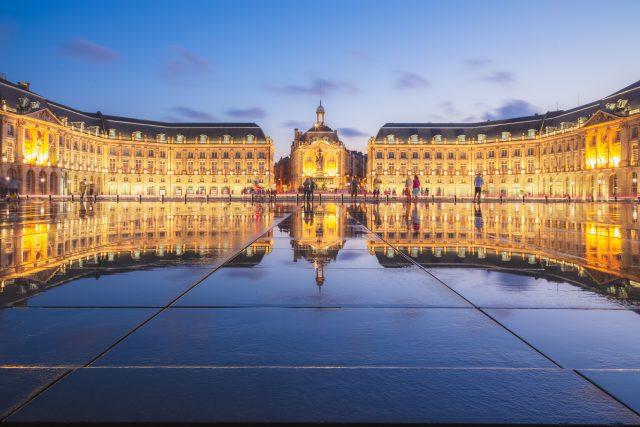This website uses cookies so that we can provide you with the best user experience possible. Cookie information is stored in your browser and performs functions such as recognising you when you return to our website and helping our team to understand which sections of the website you find most interesting and useful.
Good-value claret selling best, says J&B director
“Good-value claret” and white Burgundy are the key growth areas right now for wine merchant Justerini & Brooks, according to its buying director, Giles Burke-Gaffney.

In a conversation with the drinks business last week at a press lunch in London, the buying director highlighted areas of interest among its customers, who Burke-Gaffney noted were increasingly young.
When asked by db what’s selling well, the buying director was quick to answer, “It might sound boring, but it’s good value claret.”
By ‘good-value’, Burke-Gaffney said that he meant red Bordeaux from £8 to £30 a bottle, with the start-point price-wise being Château Le Peyrat, a wine from Cotes de Castillon that’s made by father and son team, Paul Cédric Valade.
In contrast, the market for top-end, investment-grade Bordeaux is “bleak”, according to head of broking and Bordeaux buyer at J&B, Tom Jenkins.
Reasons for this include an increasingly “cautious” approach among customers to buying fine wine at the moment, according to Burke-Gaffney, referring to the secondary market for collectible labels.
Commenting that “people are happy to keep money in the bank while interest rates are decent”, he also said that fine wine buyers are waiting for the secondary market to hit a bottom before purchasing more.
In addition to these reasons, when it comes to “great reds for laying down”, there seems to be a sense that buyers don’t need any more wine, he said.
The exception to this is the performance of white Burgundy, including high-priced bottles.
“We can’t get enough white Burgundy,” said Burke-Gaffney, adding, “It’s crazy, people are drinking it like it’s going out of fashion.”
The demand, he told db, stretches from “Mâconnais at £15 to grand cru at £250 per bottle.”
“It’s the whole spectrum; if it’s white Burgundy, people want it,” he added.
Explaining the situation, he said that such wines were popular because “they are ready to drink, and there’s been a shortage in recent years, and, since premox, people have got used to drinking white Burgundy when it’s younger, putting more pressure on supply,” he said.
He also forecasted a good en primeur campaign for red Burgundy at the start of 2024. “I’m very optimistic about Burgundy, and my view is that we have a really big Burgundy campaign coming up: people still have money and there is still interest [in acquiring fine Burgundy],” he said.
Speaking more generally about the demand for fine wine, he recorded that the market “is in a corrective period, and that is no bad thing.”
Continuing, he said, “The secondary market has been crazy over the last two years, and it will hit the bottom soon, and then people – some of whom have been priced out of the market – will pick up bargains.”
Part of his optimistic outlook also comes from his observation that “there are many more people who are interested in buying wine of quality”, and “we are seeing younger faces all the time at our tastings.”
Such consumers he said “are more open-minded and more experimental, and so more open to undiscovered regions or parts of regions”.
He told db, “The average age of our customers has dropped in the past 15 years since I’ve been at J&B, and in our top 20 customers, one is in their late 20s, and a good half are in their 30s and 40s.”
And while “the other half are the more traditional over 50s,” he said that “People are definitely buying better, and are younger than 20 years ago,” with some of J&B’s “top wines allocated to customers in their 20s.”
“It’s a big change, and the level of knowledge is huge as well,” he concluded.
Read more
What does Q4 hold for fine wine
Related news
Nicolas Feuillatte welcomes new year with new UK importer

